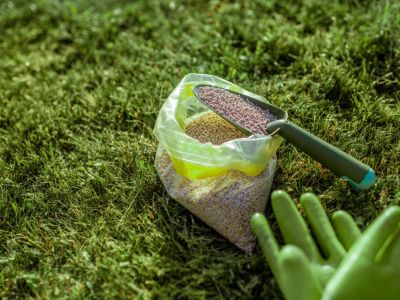What is Balanced Fertilizer?
Fertilizers are an essential part of gardening. You can fertilize with synthetic or natural products. Synthetic fertilizers are found in many different strengths and the amount of nutrients are indicated by the 3-number ratio on the product. Balanced fertilizer information is represented in identical numbers, such as 10-10-10. The amounts of each macro-nutrient are identical in the formula which may sound like a perfect fit for all around plant feeding but actually may contain too much of one of the nutrients for individual plants. It is best to perform soil tests and know individual plant needs before using a balanced fertilizer. The best way to demystify balanced plant fertilizers is to take a common formula and break it down into its nutrient amounts. So for a 10-10-10 balanced fertilizer in a 50-pound (22.6 kg.) bag, you have 5 pounds (2.26 kg.) or 10% of each macro-nutrient. These nutrients are nitrogen, phosphorus and potassium. These macro-nutrients are the essential building blocks of plant health. Nitrogen drives foliar development while phosphorus develops vital root systems, fuels flower growth and eventually fruit production. Potassium is responsible for healthy cell development and plants that are strong enough to withstand any stress. A balanced formula may not meet every plant’s needs and, in fact, can be detrimental to soil and plant health because it delivers too much of a nutrient. This is often the case with balanced fertilizers, as they contain more phosphorus than plants and soil require.
Additional Balanced Fertilizer Information
If you are confused as to what formula to purchase, try breaking down the ratio even further. For instance, the 10-10-10 is actually a 1-1-1 ratio where equal parts of each macro-nutrient are present. If you are trying to get more fruit, the balanced fertilizer will not be the best method of feeding your plants. Instead, try a formula with a higher middle number to promote flowering and fruiting. A good example of this formula for growing tomatoes and other fruiting plants might be 5-10-5 or 10-20-10. If you want green, leafy growth, such as that needed in growing lettuce crops, use a formula with a higher first number like a 10-5-5 distribution. At the end of the season, plants need to develop resistance to the cold temperatures that are coming and should not be growing new tender leaves. A formula with a higher last number will promote good root development and healthy cell structure.
When to Use a Balanced Fertilizer
If you are still trying to figure out what fertilizer is best for your landscape, a general purpose formula of 5-1-3 or 5-1-2 is usually sufficient for most plants. This is not a balanced fertilizer but is a complete fertilizer with some of each macro-nutrient present in the formula. The first number is higher to provide nitrogen to drive green growth. If you use a balanced fertilizer, do so only once per year and make sure to provide plenty of water so any unused nutrients can be leached away from plant roots. This can result in a buildup of one or more of the nutrients in soil and can actually increase the amount of that nutrient in water tables if consistently used. A better method is to skip the balanced fertilizer and use a formula that more directly targets your plant’s needs. This may mean that you need to keep several fertilizers around to accommodate fruiting plants, leafy vegetables, acid loving plants and other persnickety specimens.
